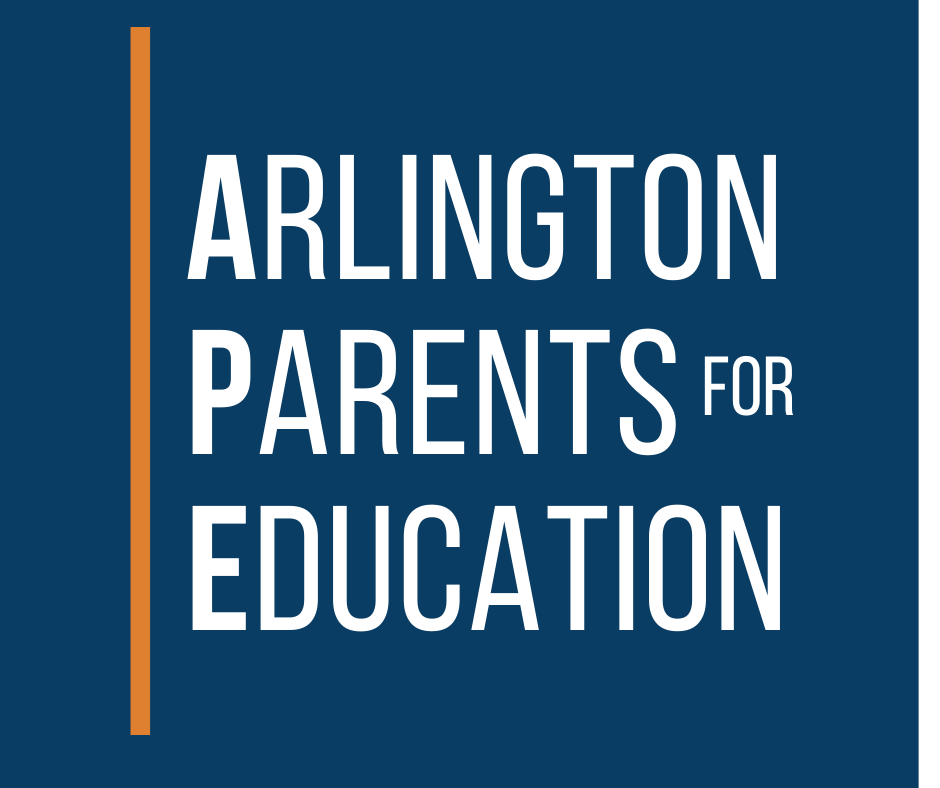Summary: 10/14/21 SB Meeting
This Thursday’s School Board Meeting focused on VLP operations, proportionality issues in student discipline, upcoming boundary issues, and facilities issues related to the upcoming CIP plan.
APE representatives spoke on two issues:
1. APS misallocation of ARP funds;
2. APS Device policy for grades K-2;
APE urged the Board to allocate leftover ARP funds to learning loss recovery and to reduce the reliance on devices in grades K-2.
Full recap:
Board discussed public notification of this year’s boundary process. Duran will make his proposal November 16; Board recommendation will be December 2.
Several parents spoke in opposition to Abington/Drew Boundary proposal; stated that proposal is not consistent with equity, and was roundly criticized last time it was proposed;
VLP parents spoke on continuing concerns: some students without teachers 7 weeks into school; not complying with IEPs; issues with home schools (e.g., homecoming);
Transportation workers raise concerns about working conditions and pay;
APE raised concerns about how APS has spent and accounted for ARP spending;
APE also raised concern about device policy for grades K-2;
APS discussed policies regarding student behaviors. Data presented on disproportionate impact of suspensions on POC, SWD, and EL students. Staff is being trained on restorative justice practices and adopting CASEL framework.
Board Comments: C. Diaz Torres - The culture of the US “has been characterized by unique level of racism and bias that has permeated every structure that has existed in this society so far.” O’Grady -- concerned that while policy addresses student mindsets, parents may need additional training. Goldstein -- what is the goal on disproportionality; APS Answer: wants to see minority students at or below the level of discipline of majority students. Kanninen – should not focus on this year’s data because it may be outlier; APS should not be too harsh on itself.
APS presented an update on the VLP Program. APS is spending a tremendous amount of time on the program, including Graves, Gaither, Jackson, and many others.
VLP is now down to 630 students: 282 Elementary; 173 Middle; 175 High school
Demographics: 24% Black, 36% Hispanic, 17% White, 60% FRL, 24% SPED, 39% EL
Student Engagement: 21% of students are not receiving synchronous instruction; Around 5% of students are not in even one meeting (like 32 students).
Filling vacancies with retired teachers and contractors; still on-boarding some
93 of 156 SWD students (60%) entitled to compensatory services
Board comments: O’Grady -- “We are learning as we go;” “Regrettable that have a situation where have so many issues;” Priddy -- Wants to understand why there was not a plan for creating new school in summer; Dias-Torres -- Asked for concrete plan to address learning loss, including high intensity tutoring. Kanninen: wants a more formal plan for monitoring VLP by mid-year.
APS creating Amazon Think Big space at Wakefield, a maker space (like Chantilly) using in-school suspension room; Was funded with gift of $150K from Amazon, and $109K from Mr. Ralph Johnson; Initiative came from gifted resource teacher at Wakefield;
Discussed CIP plan. Heard several options for ACC, with most in range of $150-170 million; There is a choice between the “base” specs, which adds 400+ permanent seats, and alternative design, which would provide space only for current programs on site.
Board Priorities and Allocation of Time: As reflected on our Board Meeting Scorecard, VLP operations continue to dominate School Board time (and apparently also senior administrator time). This week also saw significant time devoted to facilities issues (CIP plan) and equity issues (proportionality in disciplinary practices). As the Board focused on equity issues related to discipline, it is preparing to adopt boundary changes that parents say raise significant equity concerns. Board Member Dias-Torres and others continue to press for concrete learning loss recovery plans for VLP students, to include high-intensity tutoring. Meanwhile, in its three meetings this year, the Board has failed to at all address learning loss recovery for the other 26,000+ students who suffered from such learning loss last year (as demonstrated by SOL scores).
